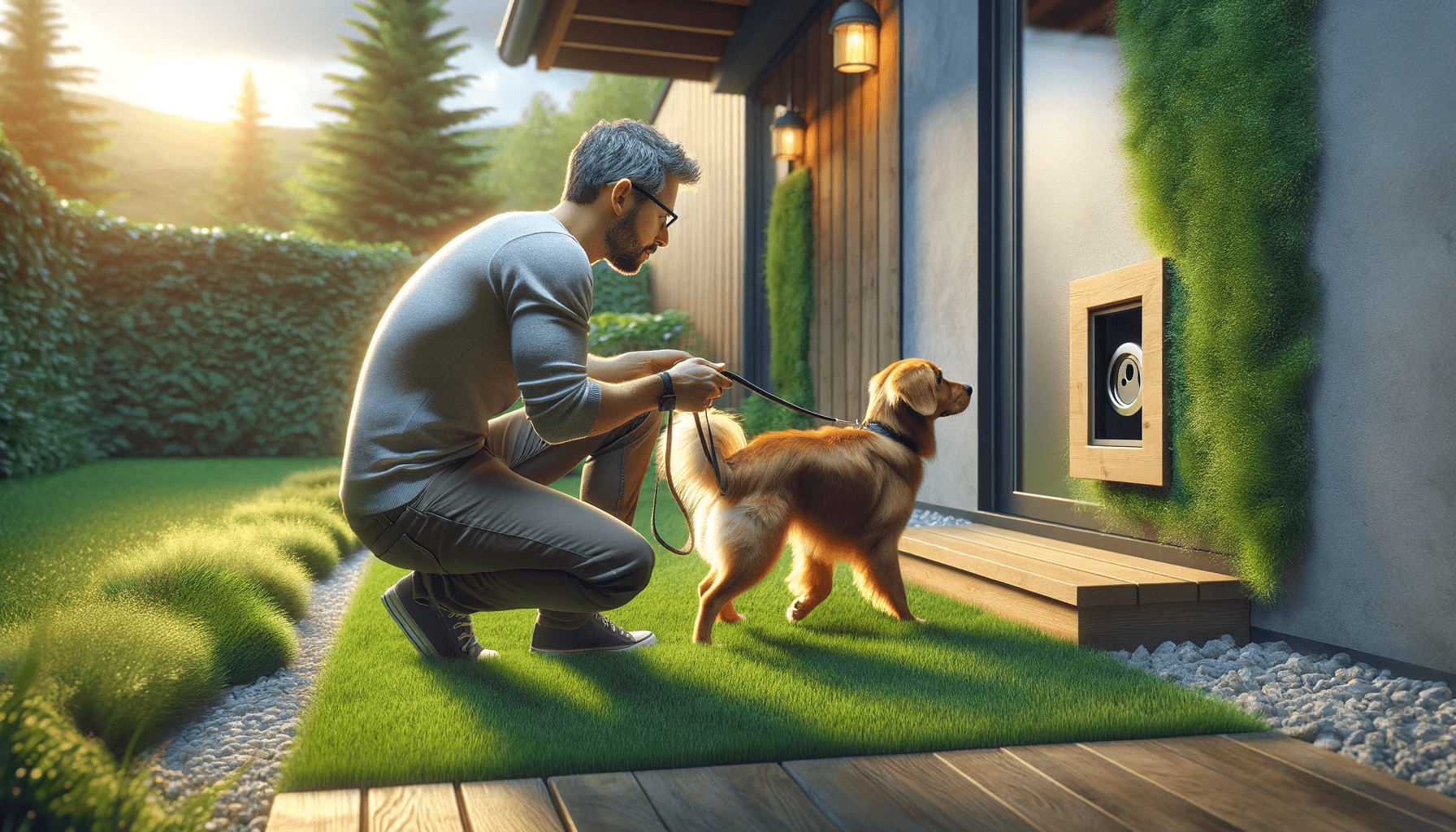Are you struggling to train your aggressive dog? Look no further! In this article, we will explore the 7 best techniques that will help you effectively train your furry friend.
With the use of positive reinforcement, counterconditioning, and desensitization, along with clicker training and behavior modification, you'll be well on your way to a well-behaved pup.
Additionally, controlled socialization, calming techniques, and consistency and patience will play vital roles in transforming your dog's behavior.
Let's get started!
Key Takeaways
- Positive reinforcement techniques, such as utilizing rewards and praise, are effective in training aggressive dogs
- Controlled socialization techniques help reduce fear and aggression towards unfamiliar individuals and animals
- Consistency and patience are crucial in training aggressive dogs
- Clicker training can enhance the effectiveness of positive reinforcement techniques and build a strong bond between the dog and the trainer
Positive Reinforcement
To effectively train an aggressive dog, you should utilize positive reinforcement techniques. Reward-based training methods are highly effective in modifying the behavior of aggressive dogs. By using rewards such as treats, praise, and play, you can encourage good behavior and create a positive association for your dog.
Positive reinforcement works by rewarding the desired behavior, reinforcing it and increasing the likelihood of it being repeated. When your aggressive dog displays good behavior, such as responding to a command or remaining calm in a stressful situation, immediately provide a reward. This can be a small treat, a pat on the head, or enthusiastic praise. The key is to make the reward meaningful and something that your dog values.
By consistently rewarding good behavior, you're teaching your dog that certain actions lead to positive outcomes. This encourages your dog to repeat those actions in the future. It also helps to build trust and strengthen the bond between you and your dog.
It's important to note that positive reinforcement should be used in conjunction with other training techniques, such as establishing clear boundaries and providing consistent discipline. By incorporating positive reinforcement into your training regimen, you can effectively address aggression in your dog and promote a harmonious relationship based on mutual trust and respect.
Counterconditioning and Desensitization
Now it's time to explore the effective techniques of counterconditioning and desensitization when training aggressive dogs.
These techniques involve gradually exposing the dog to triggers in a controlled environment, while using positive reinforcement to reinforce calm behavior.
Gradual Exposure to Triggers
Start by gradually exposing your aggressive dog to triggers using counterconditioning and desensitization techniques. Gradual exposure to triggers is an essential part of addressing aggression in dogs. By introducing your dog to the triggers in a controlled and systematic manner, you can help them develop a positive association and reduce their aggressive response.
Counterconditioning involves changing your dog's emotional response to the trigger by pairing it with something positive, such as treats or praise. Desensitization involves gradually increasing the intensity or proximity of the trigger while ensuring your dog remains calm and relaxed. These techniques can be implemented effectively with the use of a clicker, which helps to reinforce desired behaviors.
Remember to consult with a professional dog trainer or behaviorist for guidance on implementing these techniques safely and effectively.
Positive Reinforcement Techniques
Implement positive reinforcement techniques, such as counterconditioning and desensitization, to effectively train aggressive dogs. These methods focus on changing the dog's emotional response to triggers through controlled socialization techniques. Here are four key points to consider when using positive reinforcement techniques for aggressive dogs:
- Counterconditioning: This technique involves pairing the presence of a trigger with something positive, like treats or toys, to change the dog's association with the trigger from negative to positive.
- Desensitization: Gradually exposing the dog to the trigger at a distance or intensity that doesn't trigger aggression, and incrementally increasing the exposure over time, helps the dog become less reactive.
- Controlled socialization techniques: Gradually introducing the dog to new people, animals, and environments in a controlled manner can help reduce fear and aggression.
- Effectiveness of counterconditioning: Positive reinforcement techniques have been proven effective in modifying aggressive behavior in dogs by addressing the root emotional causes.
Building Trust and Confidence
How can you effectively build trust and confidence in aggressive dogs through counterconditioning and desensitization techniques?
Building trust and confidence in aggressive dogs is crucial for their overall well-being and successful training. Counterconditioning involves replacing negative associations with positive ones, while desensitization aims to gradually expose the dog to triggers in a controlled and safe environment.
Consistency is key in these techniques, as it helps the dog understand what's expected of them. By consistently using positive reinforcement and rewarding desired behaviors, you can reinforce trust and confidence in the dog.
Additionally, patience is vital in the training process, as it takes time for the dog to learn and overcome their aggressive tendencies. By remaining patient and providing a safe and supportive environment, you can help your aggressive dog build trust and confidence over time.
Clicker Training
Clicker training is an effective technique for training aggressive dogs. By using positive reinforcement, you can create a strong bond with your dog and encourage desired behaviors.
Clicker training provides clear communication and allows you to address aggression in a controlled and structured manner.
Positive Reinforcement Effectiveness
To effectively train an aggressive dog, start by utilizing the power of positive reinforcement with the use of a clicker. Positive reinforcement is a highly effective training technique that focuses on rewarding desired behaviors rather than punishing unwanted behaviors. Here are four reasons why positive reinforcement, specifically clicker training, is so effective:
- Builds a strong bond: Clicker training helps create a positive association between the dog and the trainer, strengthening the bond and trust between them.
- Encourages desired behaviors: By rewarding the dog with treats or praise immediately after hearing the clicker, the dog learns to associate the sound with a positive consequence, which encourages them to repeat the desired behavior.
- Clear communication: The clicker provides a clear and consistent signal to the dog, indicating exactly which behavior is being reinforced.
- Reduces stress and fear: Unlike punishment techniques or negative reinforcement techniques, clicker training focuses on positive experiences, reducing the dog's stress and fear levels during training sessions.
Clicker Training Benefits
By incorporating clicker training into your training routine, you can further enhance the effectiveness of positive reinforcement techniques when working with an aggressive dog.
Clicker training is a popular and effective method that uses a small handheld device, called a clicker, to mark desired behaviors. This technique helps establish clear communication between you and your dog, making it easier to reinforce positive behaviors and redirect negative ones.
Clicker training for aggression involves using the clicker to mark and reward calm and non-aggressive behaviors, while also redirecting and discouraging aggressive actions. This method allows the dog to associate the sound of the clicker with positive experiences, helping to reshape their behavior over time.
Clicker training techniques can be a valuable tool in your arsenal when working with an aggressive dog, helping to create a more harmonious and well-behaved companion.
Addressing Aggression With Clicker
Enhance your training routine for aggressive dogs with the effective technique of using a clicker to address aggression.
Clicker training has proven to be highly effective in modifying aggressive behavior in dogs. Here are four benefits of using clicker training for aggression:
- Reinforcement: The clicker serves as a clear and consistent signal to let your dog know when they've performed the desired behavior correctly, allowing you to reinforce positive actions.
- Communication: Clicker training helps establish a clear line of communication between you and your dog, making it easier to convey expectations and guide their behavior.
- Focus: The clicker helps redirect your dog's attention away from their aggressive impulses and towards the desired behavior, promoting focus and engagement during training sessions.
- Positive association: By associating the sound of the clicker with rewards and positive experiences, your dog will develop a positive association with training, making them more receptive to learning and behavior modification.
Incorporating clicker training into your training routine can greatly enhance your efforts to address aggression in dogs, providing a positive and effective method for behavior modification.
Behavior Modification
Start with simple behavior modification techniques to address aggression in your dog. Behavior modification is a key component in aggression management and can be highly effective in transforming your dog's aggressive behavior. It involves identifying the triggers that cause aggression and modifying the dog's response to those triggers.
One technique is desensitization, which involves gradually exposing your dog to the trigger in a controlled and safe environment. For example, if your dog becomes aggressive when encountering other dogs, you can start by having your dog observe other dogs from a distance and reward calm behavior. Over time, you can gradually decrease the distance between your dog and the trigger, continuing to reward calm behavior.
Another technique is counterconditioning, which involves pairing the trigger with something positive, like treats or toys, to create a positive association. This helps your dog learn to associate the trigger with positive experiences, reducing their aggression.
It's important to work with a professional dog trainer or behaviorist who specializes in aggression to ensure that you're using the appropriate techniques and to provide guidance throughout the behavior modification process.
Controlled Socialization
Continue addressing your dog's aggression by incorporating controlled socialization techniques. Controlled socialization can have numerous benefits in managing aggressive behavior. By gradually exposing your dog to different social situations, you can help them develop positive associations and reduce their fear or aggression towards unfamiliar people or animals.
Here are four key techniques to implement controlled socialization:
- Controlled introductions: Introduce your dog to new people and animals in a controlled environment, such as a neutral territory or a training class. Gradually increase the level of interaction as your dog becomes more comfortable.
- Positive reinforcement: Use treats, praise, and rewards to reinforce calm and appropriate behavior during socialization sessions. This helps your dog associate positive experiences with new situations, reducing their aggressive tendencies.
- Gradual exposure: Start with low-stress situations and gradually increase the level of difficulty. This allows your dog to build confidence and learn appropriate behavior in a controlled manner.
- Professional guidance: Seek the help of a professional dog trainer or behaviorist who specializes in aggressive behavior. They can provide expert guidance and create a tailored socialization plan for your dog.
Calming Techniques
To help your aggressive dog relax and de-escalate their aggressive behavior, employ effective calming techniques.
Breathing exercises and aromatherapy techniques can be particularly helpful in promoting a sense of calm and reducing anxiety in your dog.
Breathing exercises are a simple yet effective way to help your dog relax. Encourage your dog to take slow, deep breaths by gently blowing on their nose. You can also try belly rubs while guiding their breathing. This helps to regulate their heart rate and promote a sense of calm.
Aromatherapy techniques can also have a calming effect on your aggressive dog. Lavender and chamomile essential oils are known for their soothing properties. You can use a diffuser or spray these scents in the environment where your dog spends most of their time. However, it's important to consult with a veterinarian or a certified aromatherapist before using any essential oils, as some may be toxic to dogs.
Incorporating these calming techniques into your training routine can help your aggressive dog manage their emotions and reduce their aggressive behavior. Remember, consistency and patience are key in training an aggressive dog, so be sure to practice these techniques regularly and monitor your dog's progress closely.
Consistency and Patience
Maintaining consistency and patience is crucial when training your aggressive dog. Consistency and patience are the key to training aggressive dogs effectively. By following these techniques, you can create a structured and positive environment for your dog's training:
- Set Clear Rules and Boundaries:
Consistency is essential in establishing rules and boundaries. Ensure that everyone in the household is on the same page and enforces the same rules consistently. This will prevent confusion and provide your dog with a clear understanding of what's expected of them.
- Use Positive Reinforcement:
Patience is vital when using positive reinforcement techniques. Reward your dog for desired behaviors, such as following commands or displaying calm behavior. Consistently rewarding these actions will help your dog associate positive outcomes with good behavior.
- Stick to a Routine:
Dogs thrive on routine. Establish a consistent daily routine for your dog's training sessions, exercise, feeding, and rest. Consistency in their daily routine will create a sense of security and stability, reducing their anxiety and aggression.
- Seek Professional Help:
If you're struggling to train your aggressive dog, don't hesitate to seek professional help. An experienced dog trainer or behaviorist can provide guidance tailored to your dog's specific needs. They'll teach you effective techniques and help you remain patient and consistent throughout the training process.
Frequently Asked Questions
Are There Any Specific Breeds That Are More Prone to Aggression and Require Different Training Techniques?
Certain breeds may have a higher tendency towards aggression, which can require different training techniques. It's important to understand the specific breed aggression and tailor the training approach accordingly for effective results.
How Long Does It Typically Take to See Results When Using Positive Reinforcement Techniques?
To effectively use positive reinforcement techniques for training aggressive dogs, it's important to be patient and consistent. Results may vary, but with proper management and prevention of aggressive behavior, you can start seeing improvements within a few weeks.
Can Aggressive Behavior in Dogs Be Completely Eliminated Through Training?
Aggressive behavior in dogs can be significantly reduced through training, but complete elimination is not always guaranteed. Positive reinforcement techniques are effective in curbing aggression, but the extent of improvement depends on various factors.
Is It Possible to Use Clicker Training With Older Dogs Who Have Already Developed Aggressive Behavior?
Yes, it is possible to use clicker training with older dogs who have developed aggressive behavior. However, it may be more effective to also explore alternative training methods specifically designed for aggressive breeds.
Are There Any Potential Risks or Side Effects Associated With Using Behavior Modification Techniques on Aggressive Dogs?
When training aggressive dogs, it's important to be aware of potential risks and side effects. Some techniques may exacerbate aggression or cause stress. Consulting with a professional trainer can help mitigate these risks and ensure effective training.
Conclusion
In conclusion, training aggressive dogs requires a combination of effective techniques. These techniques include positive reinforcement, counterconditioning and desensitization, clicker training, behavior modification, controlled socialization, calming techniques, and consistency and patience.
By implementing these techniques with knowledge and expertise, dog owners can help their aggressive dogs overcome their behavioral issues and develop positive behaviors. It's important to remember that training aggressive dogs requires professional guidance and diligent effort.
But with the right approach, it's possible to transform their behavior and create a harmonious relationship between dogs and their owners.






